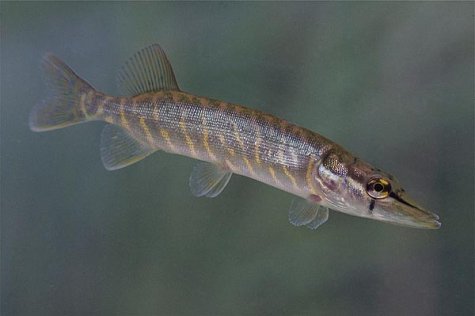Teeth of the pike
Photo: Tiit Hunt
Translation: Liis
Pike
| Pike |
Haug |
Esox lucius |
Autumn is here and preparations for winter go on in the waters too. Whenever the weather allows a trip to the fishing waters is interesting. The solitarily living pike has its autumn foraging period. Its preying goes on in shallow waters, among wilting aquatic plants, preferably in daylight time, because according to the ichthyologists a pike’s range of vision is less than three meters in water, of course depending on the clarity of the water. Even the fry of this spring have turned into predators. By now they have grown to be ten centimetres long.
Let us have a look at the teeth of this predator fish: they are pointed inwards to give the prey less chance of getting away. Over the years only the teeth in the lower jaw change. They are always of different sizes because the inner part of the lower jaw is covered with soft tissue which holds the curved rows of replacement teeth. A pike tooth has 2-4 replacements; when one tooth falls out a reserve fang grows out. It is loose at first but with time becomes securely fastened to the lower jaw.
To get the weight of a pike up to one kilo, it needs to eat up to ten kilos of fish, and further on this proportion only increases. The prolific carp population in the brackish waters is frequently culled, and hopefully fishermen can look forward to good catches in the next few years.









